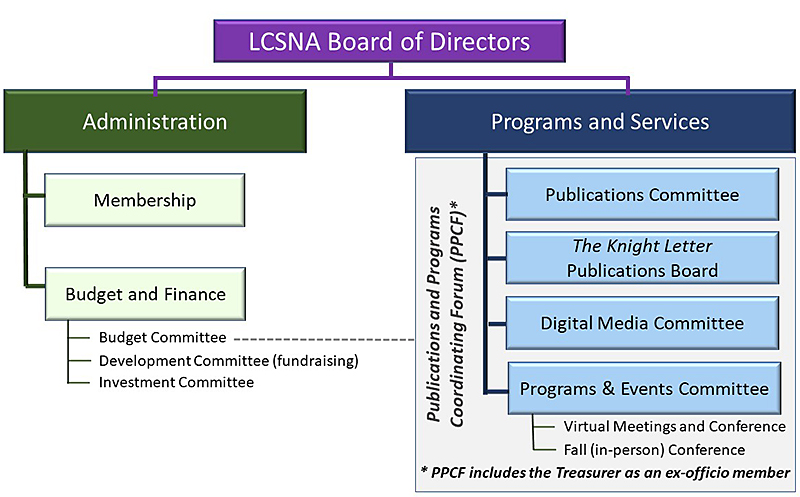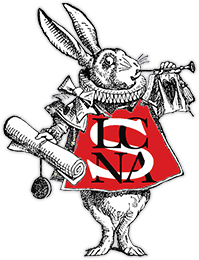Overview

Board of Directors. Responsible to manage the affairs and funds of the Society, to conduct its business and take general care of its interests, and to report to the Society from time-to-time on the major activities of the Board. The Board of Directors has the authority to: (a) amend the Bylaws by a 2/3 majority of the Board; (b) elect the Officers of the Board; (c) adopt and execute a plan providing for the disposition of all of the property and assets of the Society in the event of the dissolution of the Society. The term of office of each Director and Officer is three years, with eligibility to serve a maximum of three consecutive terms, and thereafter eligible for reelection to the Board after a one-year hiatus. The Board delegates to each committee the authority to complete its responsibilities as outlined below, with the Board ultimately responsible to both ensure fiduciary oversight and to approve of policies and recommendations that each committee may propose. The Executive Committee of the Board (i.e., the four officers: the President, Vice President, Secretary, and Treasurer) coordinates the general operations of the Board, and act on behalf of the Board in emergency situations.
Programmatic Committees
Publications Committee. Considers and develops proposals to publish new Carroll studies and primary source materials relevant to the life and work of Lewis Carroll, and creative works inspired by Carroll, and promotes general awareness and appreciation of the influence of Lewis Carroll. The formats of publications under the Committee’s purview include monographs, pamphlets, and other occasional publications that are: (a) conceived and developed by LCSNA in collaboration with other organizations; (b) commissioned by LCSNA to prepare a work based upon an idea emanating from the Committee; (c) created by others and brought to LCSNA to produce or publish; (d) co-sponsored by LCSNA (in name only or partially funded); (e) print-on-demand, including reprinting items from the Society’s; (e) produced as a series or package of publications in collaboration with another publisher; and (f) new forms of publication, such as creating and distributing digital databases, visual resources, or other “non-print” information.
The Knight Letter Publications Board. Consists primarily of the editorial staff of the Knight Letter, but the Board may also add outside advisors or voices as members if appropriate. The primary responsibility of the Publications Board is to ensure publication of two high-quality issues per year of the Society’s journal, the Knight Letter.
Digital Media Committee. Responsible to ensure a continuous and creative stream of information by and about the Society on all of the Society’s digital platforms, including the website and blog, social media platforms (Facebook, Twitter, Instagram, and the YouTube channel). In addition to the creation of news feeds, the Committee is responsible for developing creative new ways to use existing and new social media platforms.
Programs and Events Committees. Two separate committees communicate and collaborate to share ideas about topics and potential speakers.
- Virtual Meeting Conference Committee. Develop ideas and identifies speakers, and provide the technology and logistical support for virtual programs for monthly sessions and the once-per-year virtual conference. Responsible for establishing guidelines for speaker honoraria, obtaining from speakers and institutions permission to reuse their materials, and evaluating the quality of each program provided by the Society. (The virtual conference in 2023 is the Spring conference.)
- In-Person Conference Committee/Working Group. An annual working group identifies speakers and coordinates local meeting logistics, including arranging meeting spaces, determining speakers honoraria, coordinating any catering, handling all on-site technology, and providing attendees with venue information, e.g., nearby hotels and restaurants, or other things to see in the meeting location. Fall Conference planners may choose whether the meeting is solely available in-person or whether to provide a hybrid (live and virtual) option. (The in-person conference in 2023 is the Fall conference.)
The Publications and Programs Coordinating Forum (PPCF). Convened quarterly by the President to encourage information sharing, and to foster cooperation and collaboration, among the Forum members, i.e., the chairs of the Publications Committee, the Knight Letter Publications Board, the Digital Media Committee, the Virtual Meeting and Spring Conference Committees, the In-Person Fall Conference Committee/Working Group, and the Treasurer.
Administrative Committees
Membership Growth and Retention Committee. Develop strategies and execute a comprehensive plan to recruit new members (with a particular attention to attracting younger members and institutional members), and to retain current members.
Budget Committee. Recommend the annual budget to the Board, monitor expenditures throughout the year, make determinations on the investments of the Society’s financial assets, and review of the annual audit and Federal 990 form as a non-profit organization. The Committee also works with the Development Committee to expand the revenue necessary to support the Society’s programs and services.
Development Committee. Develop strategies and execute a plan to expand the Society’s fundraising efforts, including setting out expectations, goals, methods. Development may include donations by individuals, creation of endowments, encouraging will commitments and bequests from members, and identifying and seeking out potential foundation or grant funding to undertake initiatives consistent with the mission of the Society.


